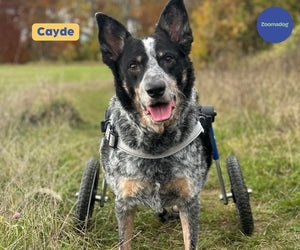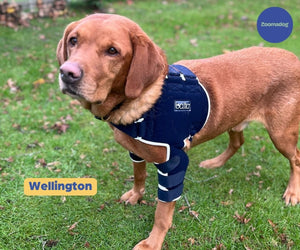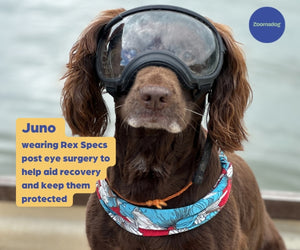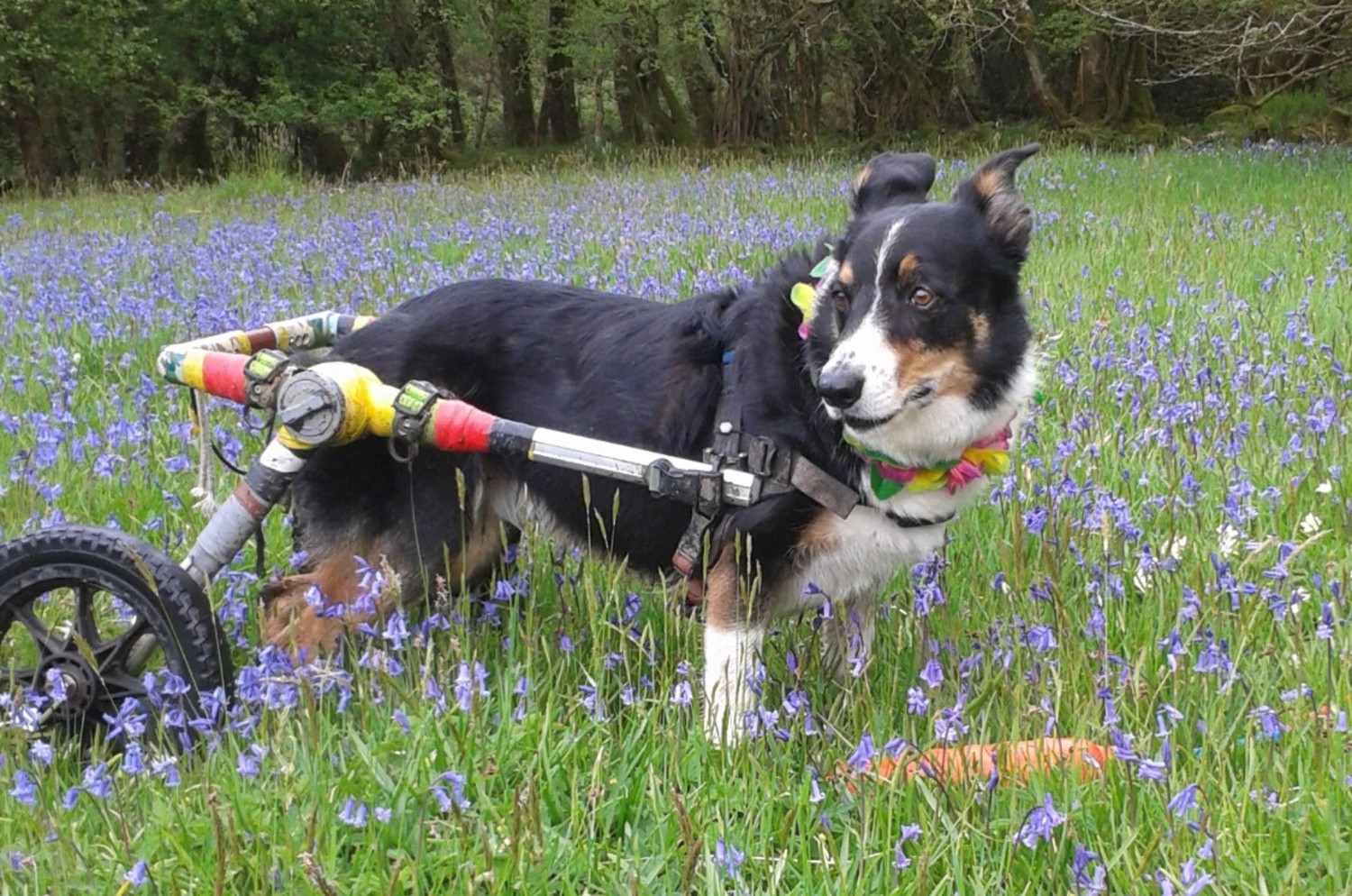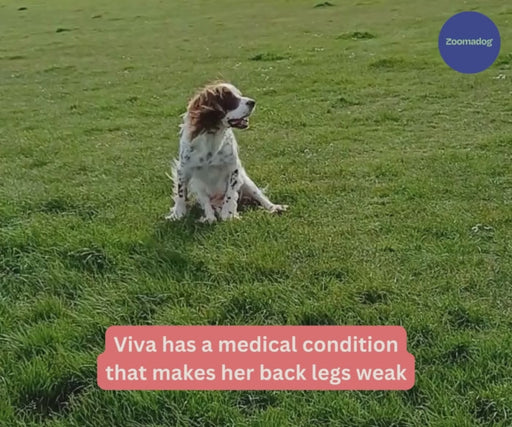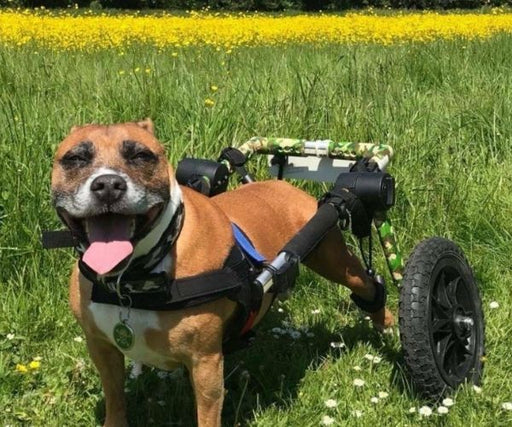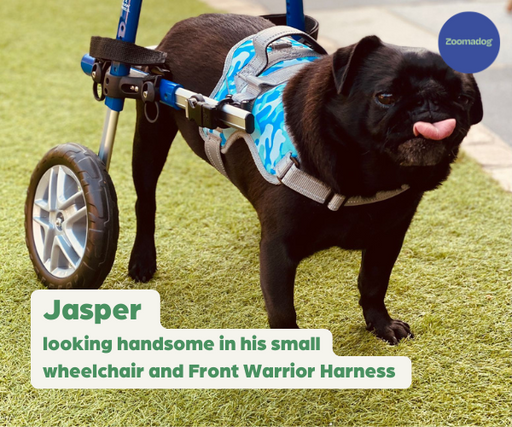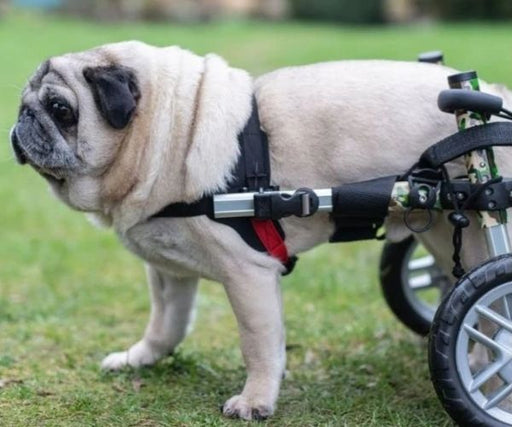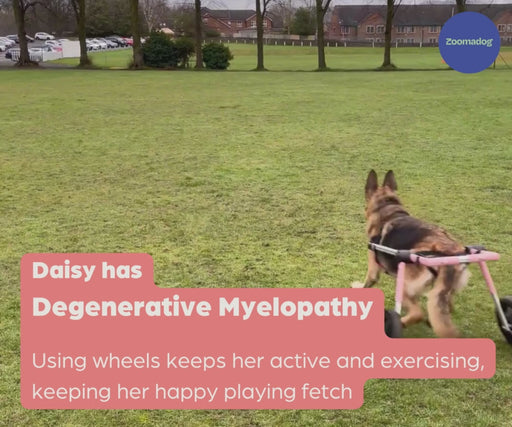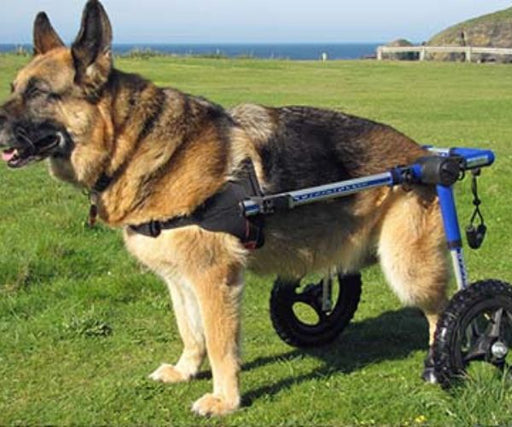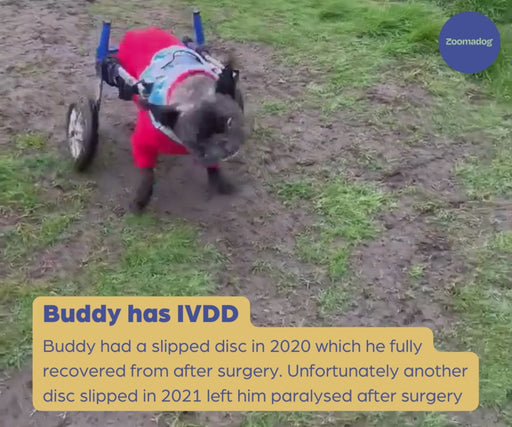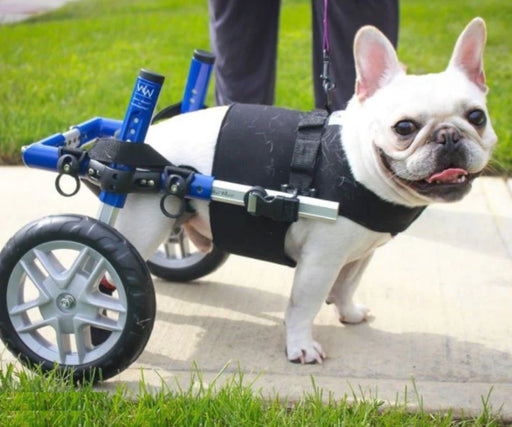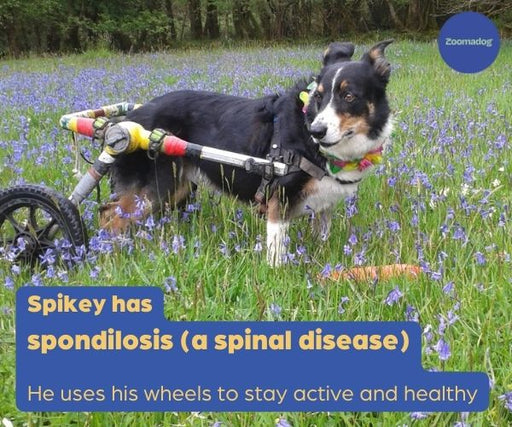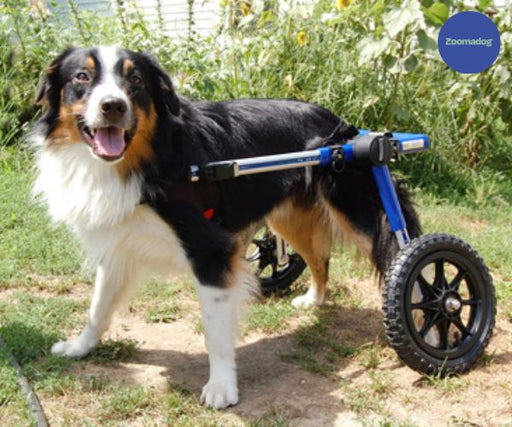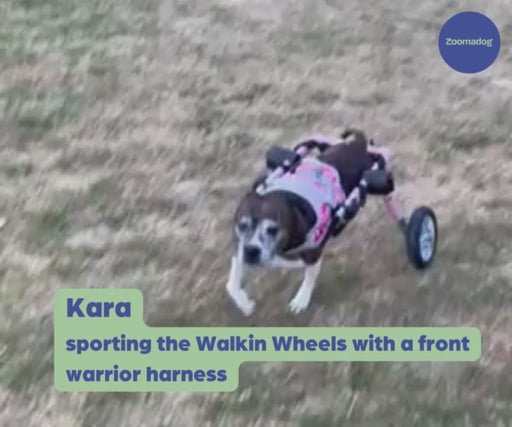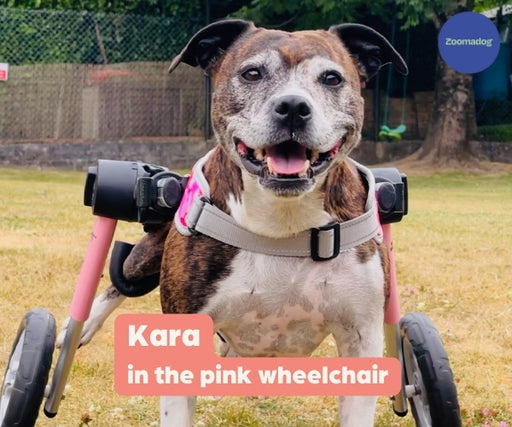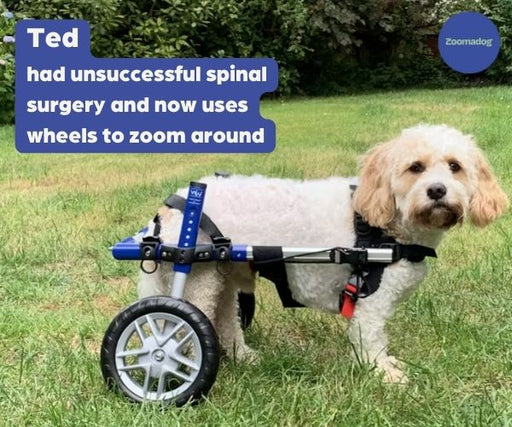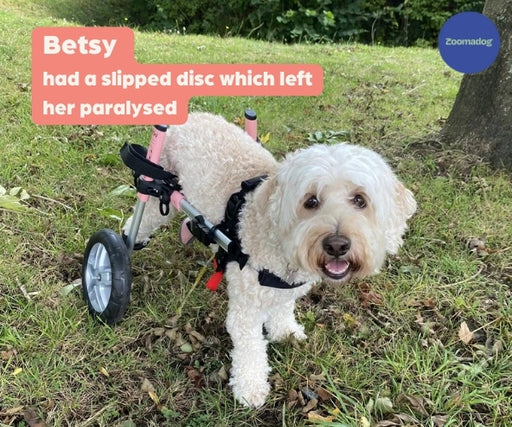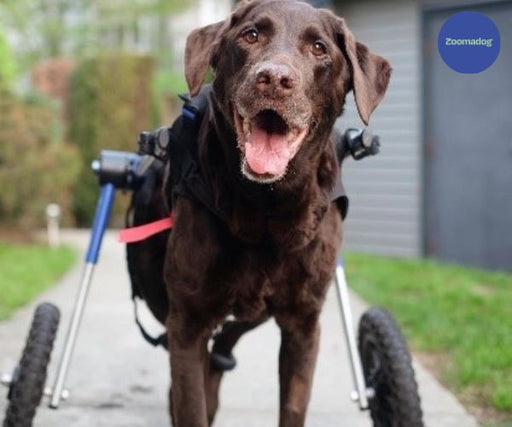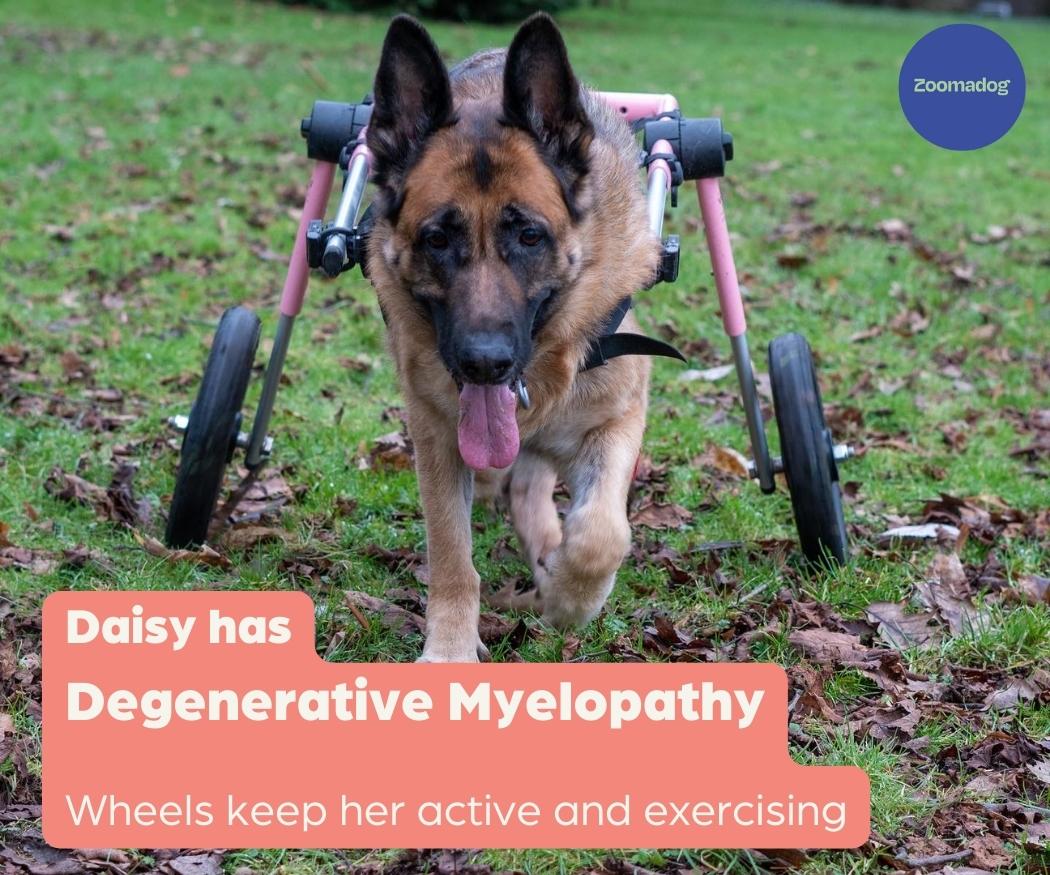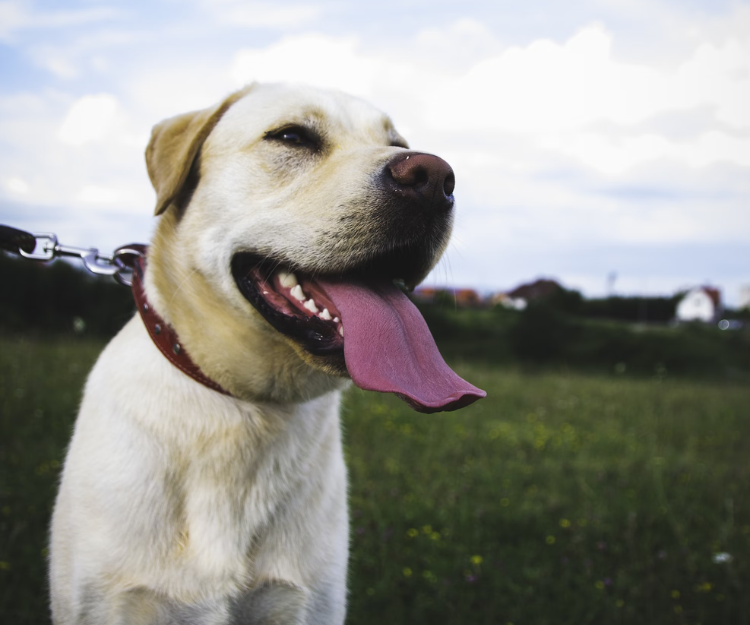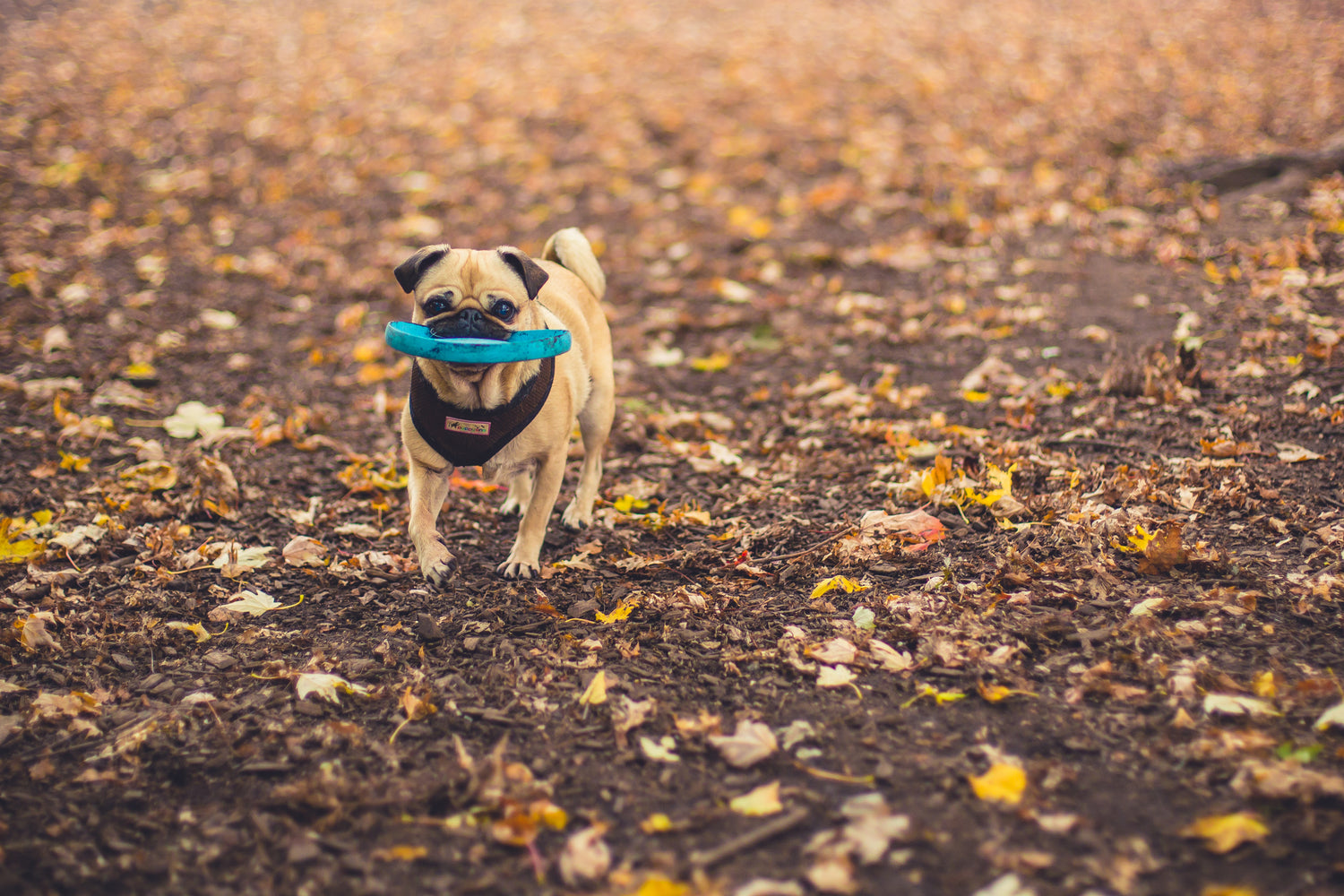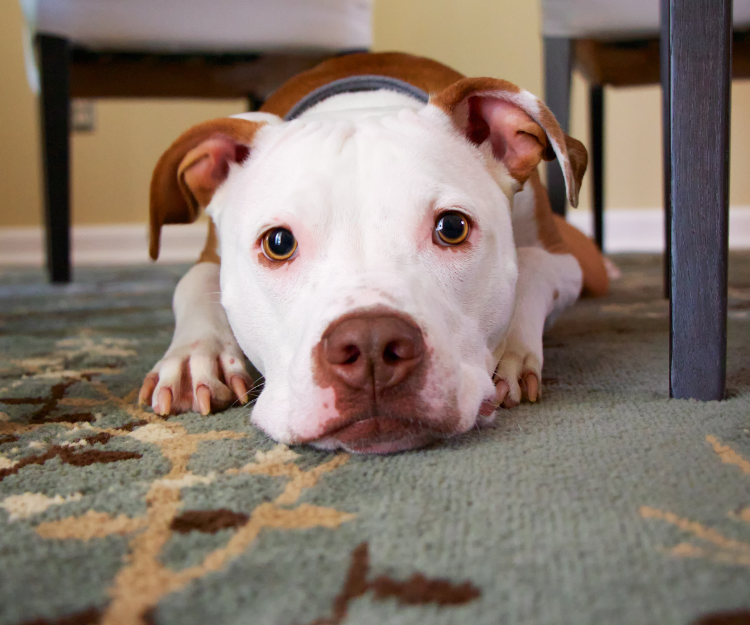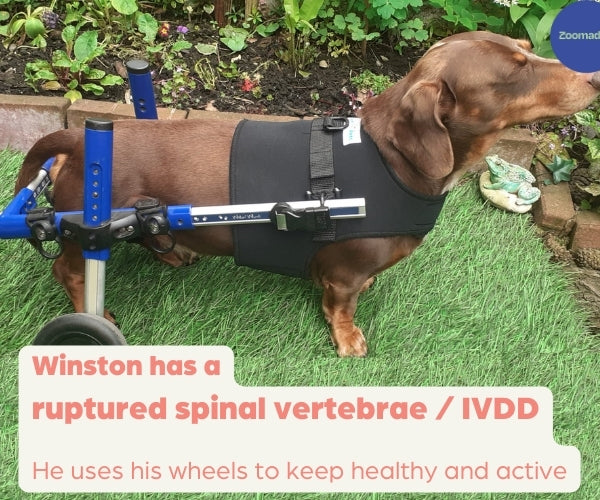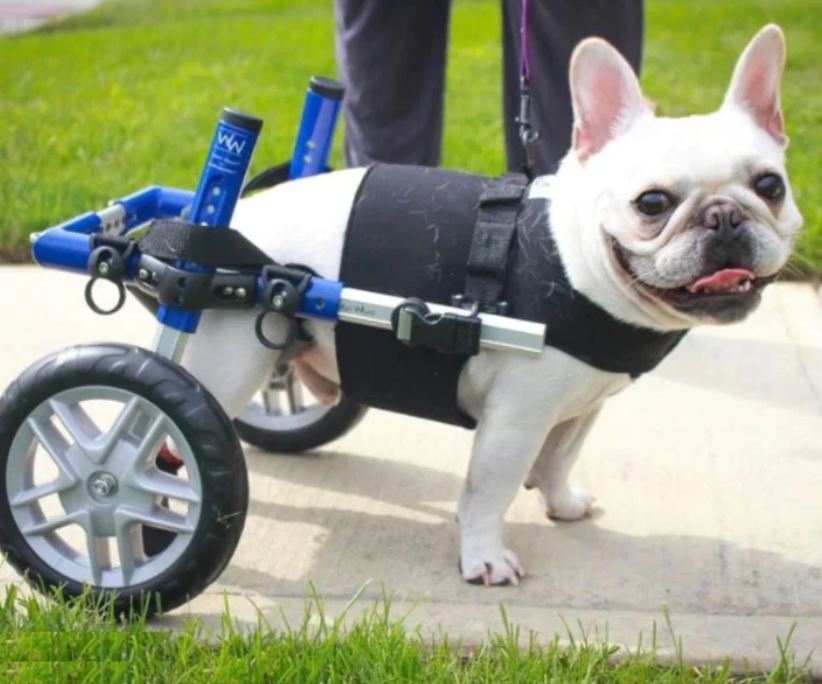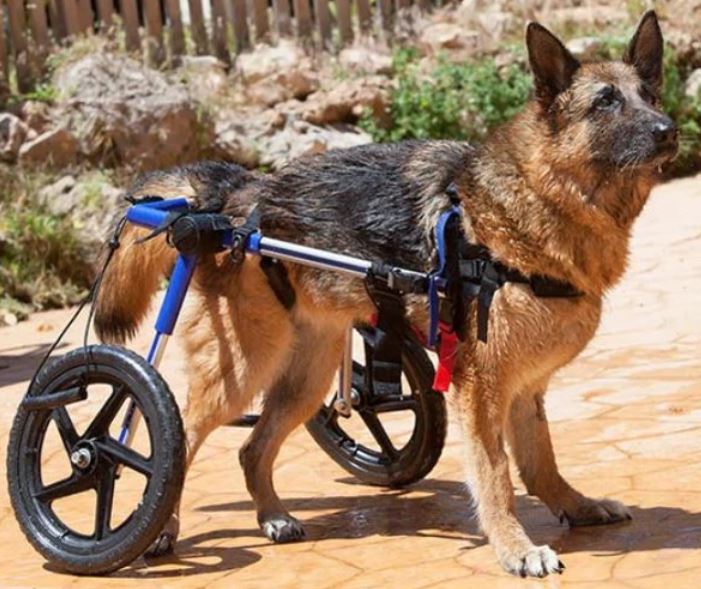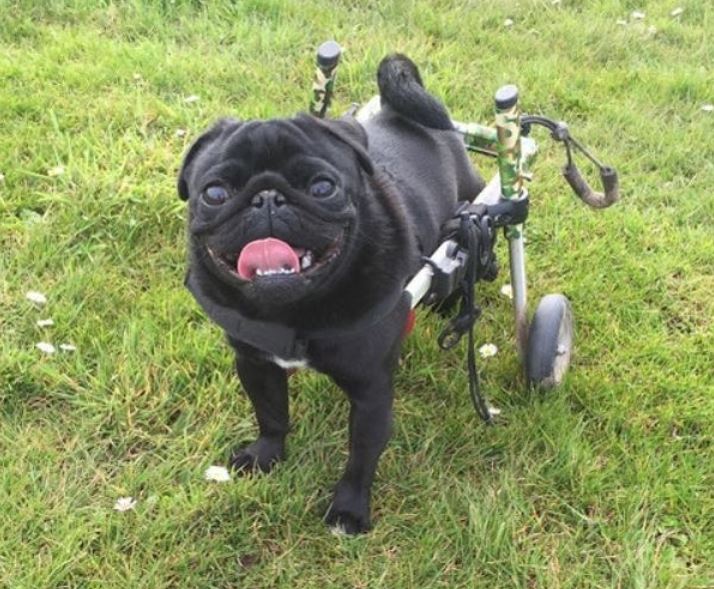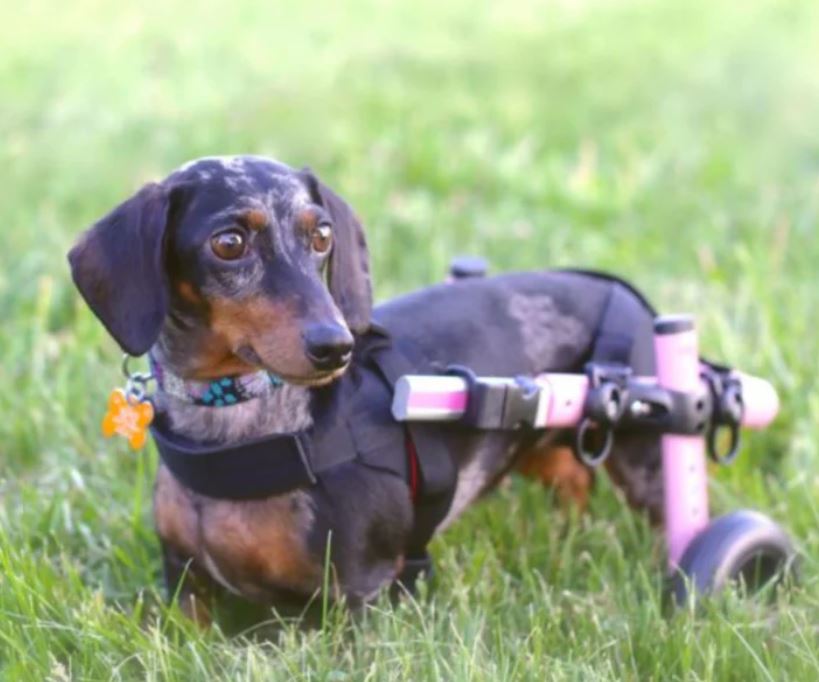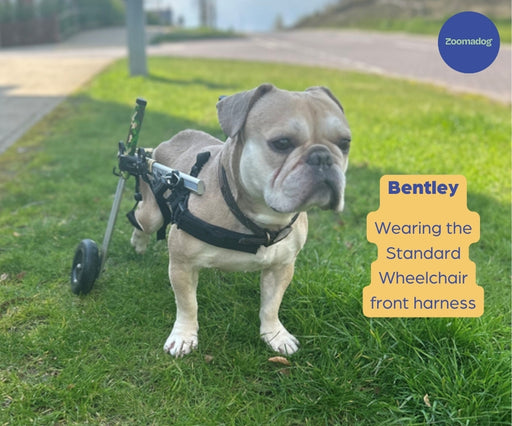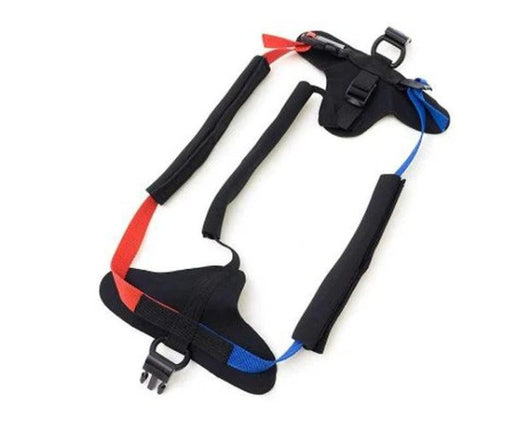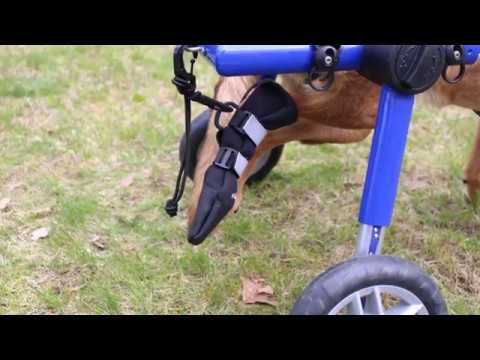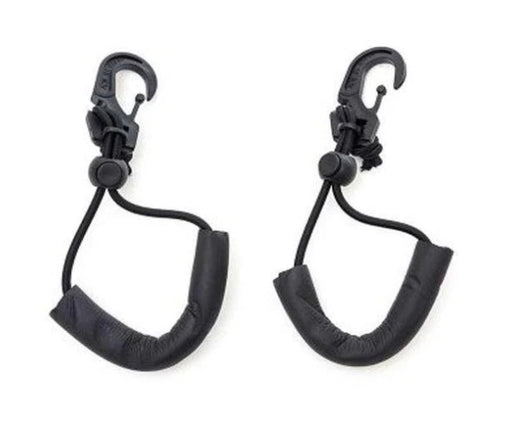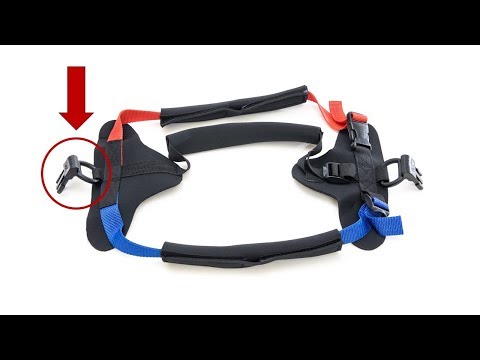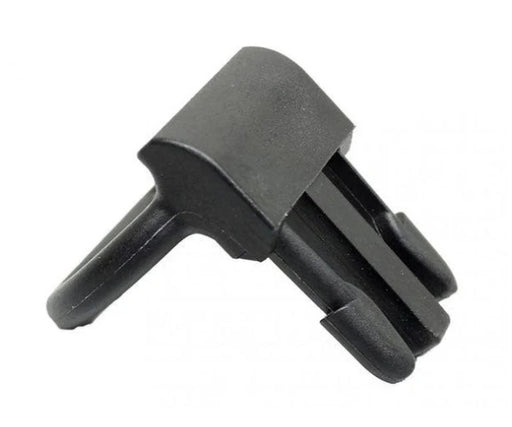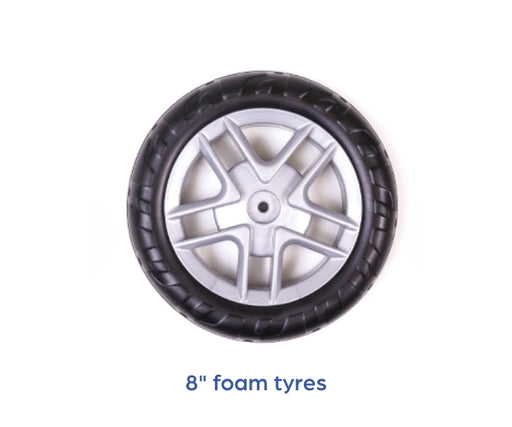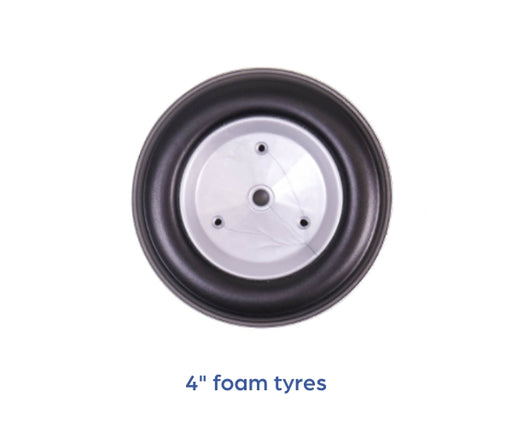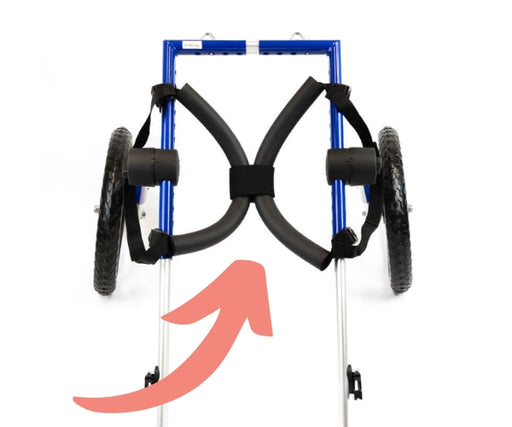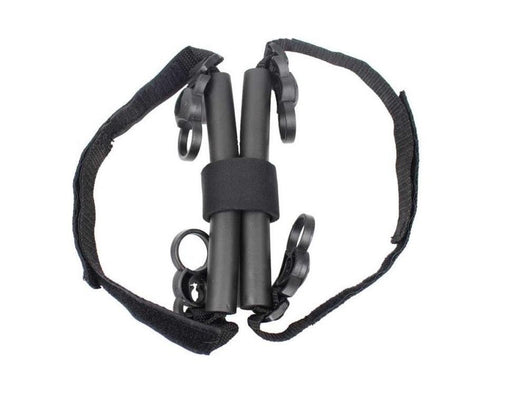Q: "Hello, measuring my dog, she is at the top of the small size range. Would this allow for weight fluctuation as she’s the higher end of scale? She’s obviously not been moving much recently but that should change once she has her wheels."
A: Yes, a Small wheelchair allows for weight fluctuations between 5kg - 15kg.
Q: "Hi, My GSD has elbow dysplasia. Do you have a dog wheelchair that would suit him please?"
Dogs with problems in their forelegs, or are front amputees, can do very well with the Quad wheelchairs. These support the whole torso and not just the hips. The front wheels act like stabilisers on a bike.
Q: "I am looking to buy a wheelchair for my French Bulldog. She has become quite wobbly on her back legs but is still relatively young, is otherwise well and so enjoys being out and about. We have been advised by our vet to think about moving her into a wheelchair. Do dogs adapt well to these and what sort of attachments will we need?"
A: The wheelchairs are great for dogs that have weak back legs, they usually adapt quickly to them and are soon up and running. Dogs can get a bit tired at first because they will be doing more exercise than normal, so build up their fitness. The wheelchair kit comes with everything you need but it is possible to buy different harnesses and belly supports, which might be more comfortable if your dog is going to use the wheels for many years to come.
Q. "Hi, I am nervous about not taking the right measurements etc for the wheelchair for my German Shepherd. Please could you give me an explanation as to what I need to do, I do need it in the simplest of terms!"
A: Please don't worry, we know it can seem overwhelming but we will talk you through it.
Firstly, we need your dog’s weight. The next measurement is their back leg length. Measure this as if they were standing normally (rather than pulling the leg out to its full extension). If they can't stand well, then it's equally easy to take the measurement with them lying down. It's from the join where their leg meets their torso (the groin) to the tip of their longest toenail. And finally, we need their ATR (armpit to rump) measurement.



